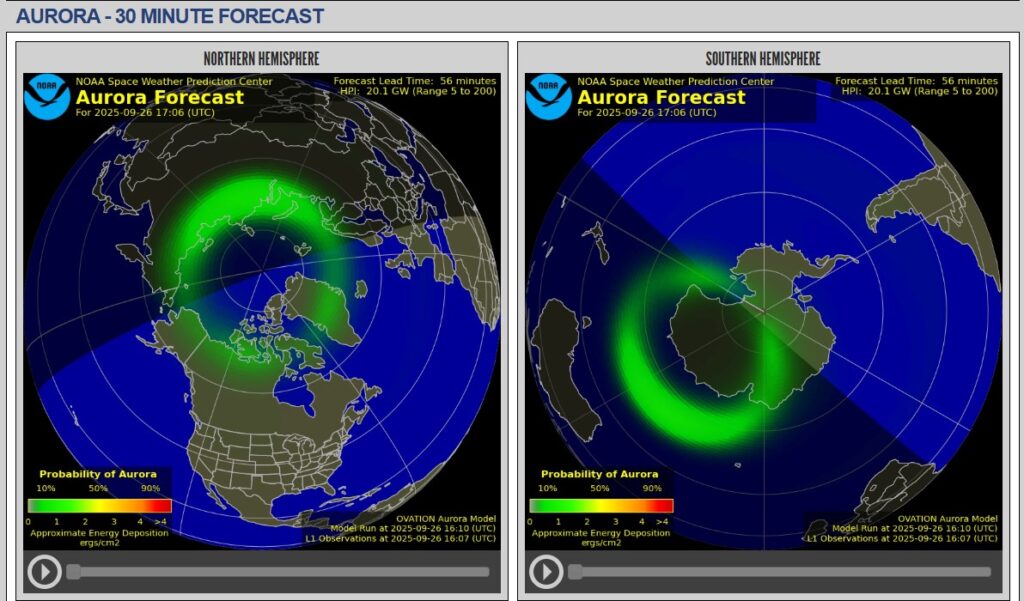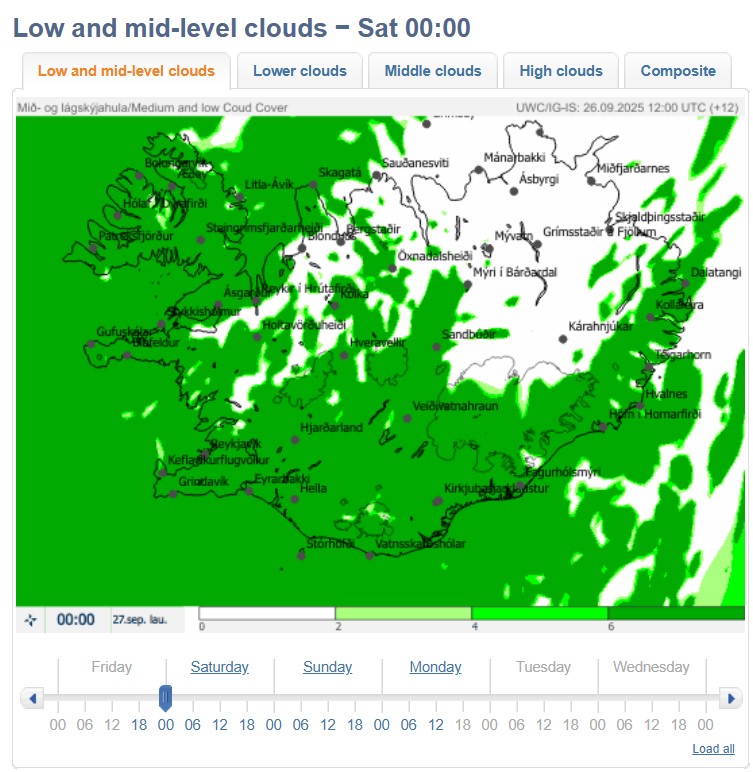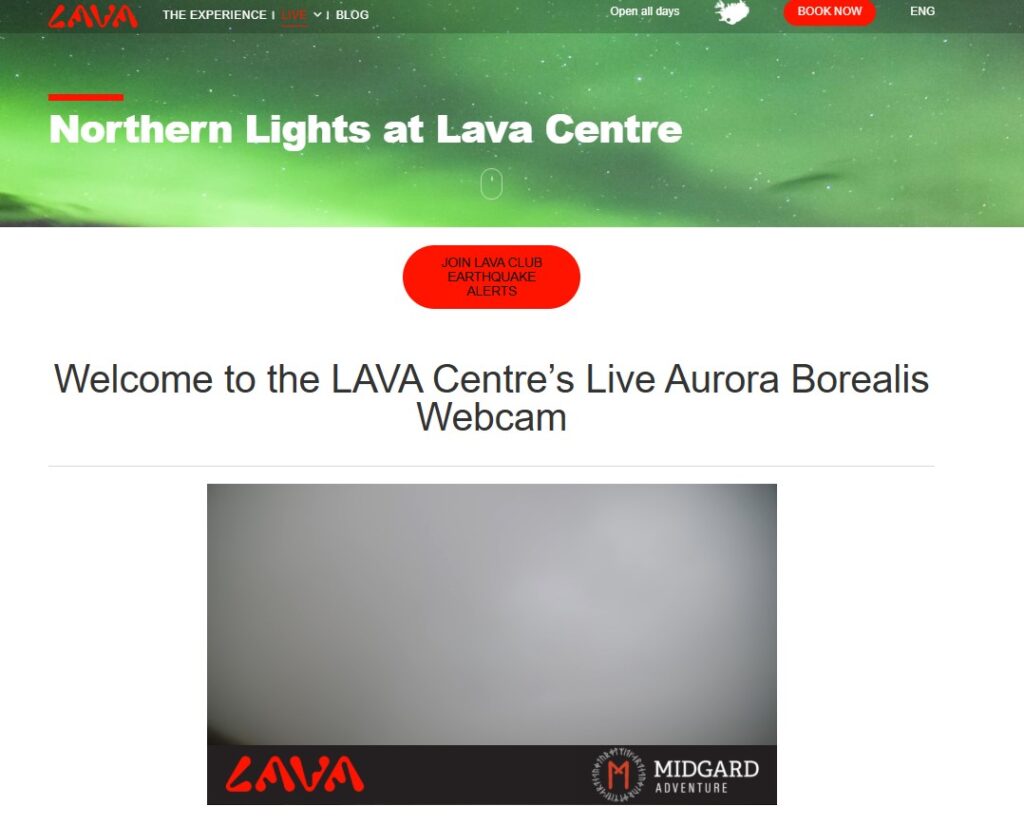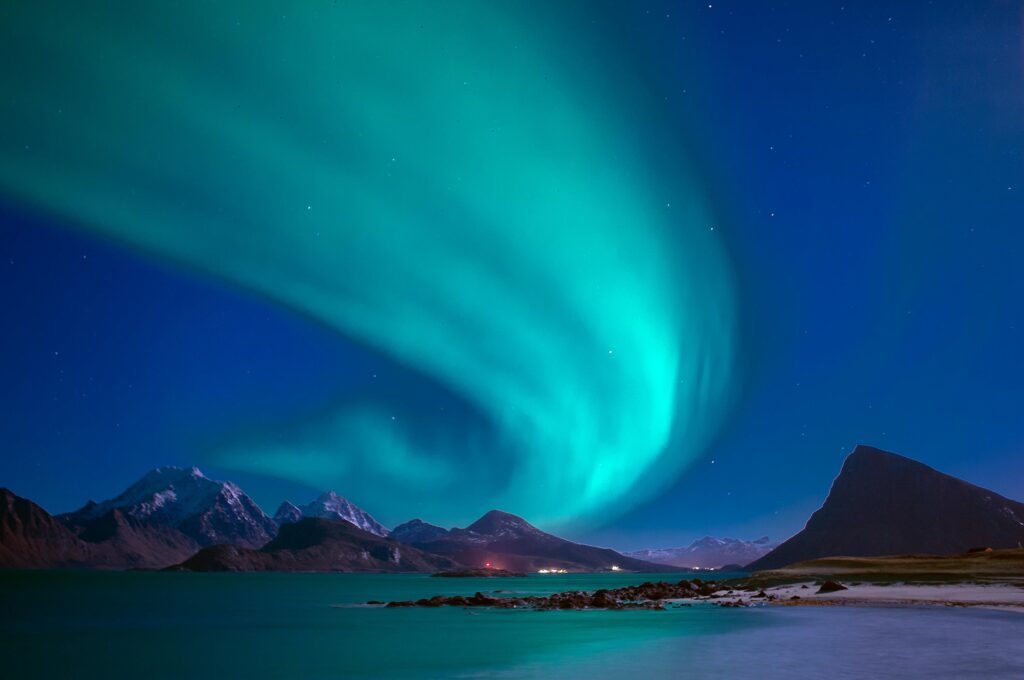Few experiences rival the magic of seeing the Northern Lights dance across Iceland’s night sky. But catching them isn’t just about luck – it’s about timing, location, and a little science. Although we were not lucky enough to see them, we learned a lot along the way and using the tips below will really help dampen frustration and increase your chances.
If you’re planning a trip and hoping to witness the aurora borealis, here’s how to boost your chances and track them like a pro.
🔬 The Science Behind the Northern Lights
The Northern Lights, or aurora borealis, are caused by charged particles from the sun colliding with gases in Earth’s atmosphere. These particles are carried by solar winds and guided by Earth’s magnetic field toward the poles. When they interact with oxygen and nitrogen high in the atmosphere, they emit light – creating the glowing greens, purples, and reds we see in the sky.
The intensity of the aurora depends on solar activity and solar wind activity, which fluctuates based on sunspot cycles and geomagnetic storms. The stronger the solar wind and the more active the sun, the brighter and more widespread the aurora.
🛰️ How to Track the Northern Lights
Predicting the Northern Lights is a mix of science, tech, and patience. Here’s how to do it:
1. Go at the Right time of year
- The Northern Lights are only visible when the sky is dark enough – which means September through mid-April is your window. Summer months in Iceland have nearly 24-hour daylight, making aurora sightings impossible. The peak months are October to March, when nights are longest and conditions are ideal. Aim for a trip during these months, and avoid full moon nights if you want the best contrast against the stars.
2. Be in the Right Location – Away from Light Pollution
Light pollution can ruin your chances. Cities and towns cast a glow that drowns out the aurora’s subtle shimmer. To maximize visibility:
- Drive away from populated areas and streetlights
- Seek out national parks, remote beaches, or quiet valleys
- Use satellite maps or apps to find dark sky zones
The darker your surroundings, the brighter the aurora will appear.
3. Check Solar Activity
- NOAA’s Space Weather Prediction Center provides real-time aurora forecasts and even a video simulation of overnight aurora activity. Look for high Energy Deposition values (red) as that’s when there’s the most solar activity. Watch the entire video for that night as sometimes solar activity can quickly appear and disappear. Note the time in which the high solar activity occurs.

4. Monitor Cloud Cover
- Even with strong solar activity, clouds can block your view. The Icelandic Met Office has a Aurora forecast site with cloud cover forecasts. Look for areas with low or no cloud cover, especially in the north and east where skies tend to be clearer.

5. Use the Aurora App
- The Aurora App uses GPS to give you real-time predictions based on your current location. It combines solar data and weather forecasts to estimate your chances of seeing the lights – super handy if you’re road-tripping or camping. Look for high Kp index values – a scale from 0 to 9 that indicates geomagnetic activity. A Kp of 4 or higher is promising in Iceland. It will also give you a percentage chance of seeing the Northern Lights that accounts for the solar activity and cloud cover.
6. Join Facebook Groups
- On the night of your hunt, join groups like Aurora Hunters Iceland or Northern Lights Iceland. Locals and travelers post live sightings, photos, and tips. You’ll often find real-time updates that help you pivot your plans if the lights appear elsewhere.
7. Check the Live Cams
- There are two Northern Lights webcams we found in Iceland stream the sky in real time. One is at the Land Hotel, and the other at the Lava Center. If you are near those areas, you can watch those cams from the comfort of your bed and spring into action only once the Auroras are seen.

🧭 Tips for a Successful Northern Lights Chase
- Go where the clouds aren’t: Even if the aurora forecast is strong, cloud cover can ruin the view. Be ready to drive to clearer skies.
- Be patient: The lights can appear suddenly and vanish just as fast. Some nights require hours of waiting – bring snacks, warm clothes, and a sense of adventure.
- Stay flexible: Conditions can shift quickly. If the forecast changes, don’t be afraid to change your location.
- Avoid light pollution: Head away from towns and streetlights. National parks, remote beaches, and quiet valleys are ideal.
🌟 Final Thoughts
Seeing the Northern Lights in Iceland is never guaranteed – but with the right tools, timing, and a bit of perseverance, your odds go way up. Whether you’re standing under a glacier sky or watching from a quiet fjord, the moment those lights shimmer overhead is unforgettable.
So pack your layers, charge your camera, and let the hunt begin. Bucky says bring hot chocolate too – it gets chilly at the best spots!

